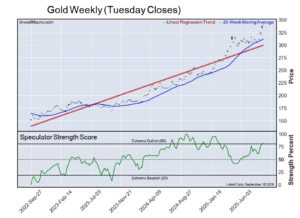Retail sales was virtually unchanged month-over-month in June. Despite this, the reading was still higher than the consensus forecast calling for a decrease of -0.3%. Additionally, May’s figure was revised upwards to a 0.3% monthly gain (previously 0.1%).
Trade in the auto sector was down -2.0% m/m, as the increase at automotive parts and accessory stores (1.0%) was wholly offset by the decline at motor vehicle dealers (-2.3%).
Sales at gasoline stations fell a sizeable -3.0% m/m, extending last month’s -2.1% m/m decline and reflects the continued pullback in gas prices. The building materials and equipment category rose by 1.4% m/m.
Sales in the retail sales “control group”, which excludes the volatile components above (autos, building materials and gas) and is used to estimate personal consumption expenditures (PCE), rose 0.9% on the month after rising by 0.4% m/m in May.
Among the control group, the largest positive contributions came from non-store retailers (1.9%% m/m), health and personal care stores (0.9%) and clothing and accessory stores (0.6% m/m).
The only control-group category to decline was sporting goods and hobby stores (-0.1% m/m).
Food services & drinking places – the only services category in the retail sales report –rose 0.3%. May’s data was also revised to growth of 0.4% (reported as a -0.4% m/m decline previously).
Key Implications
Retail sales have had a rather tepid showing for much of the second quarter and today’s outturn added to the lackluster performance. The data adds to the growing evidence that households aren’t quite as impervious to higher interest rates and prices as earlier spending might have suggested. With recent data showing that labor market conditions continue to cool, prospects for a rebound are limited. All said, retail sales did stage a modest rebound in the second quarter, up 2.2% q/q (annualized) from a -0.8% (annualized) decline last quarter.
And the consistent data continues to roll in. Fed members have stressed data dependence in their quest to bring inflation to heel without triggering an economic slump. Today’s report showing waning consumer spending adds to the recent employment and inflation numbers in that train of data. In Fed Chair Powell’s first remarks since the inflation report, he noted that the central bank will not wait for inflation to hit 2% before cutting rates. While he might not have been intending to make any signals about when the Fed might start to cut rates, market players have nonetheless parsed his words for any hints of when one might be forthcoming. So far, bets are rising for a September cut.









